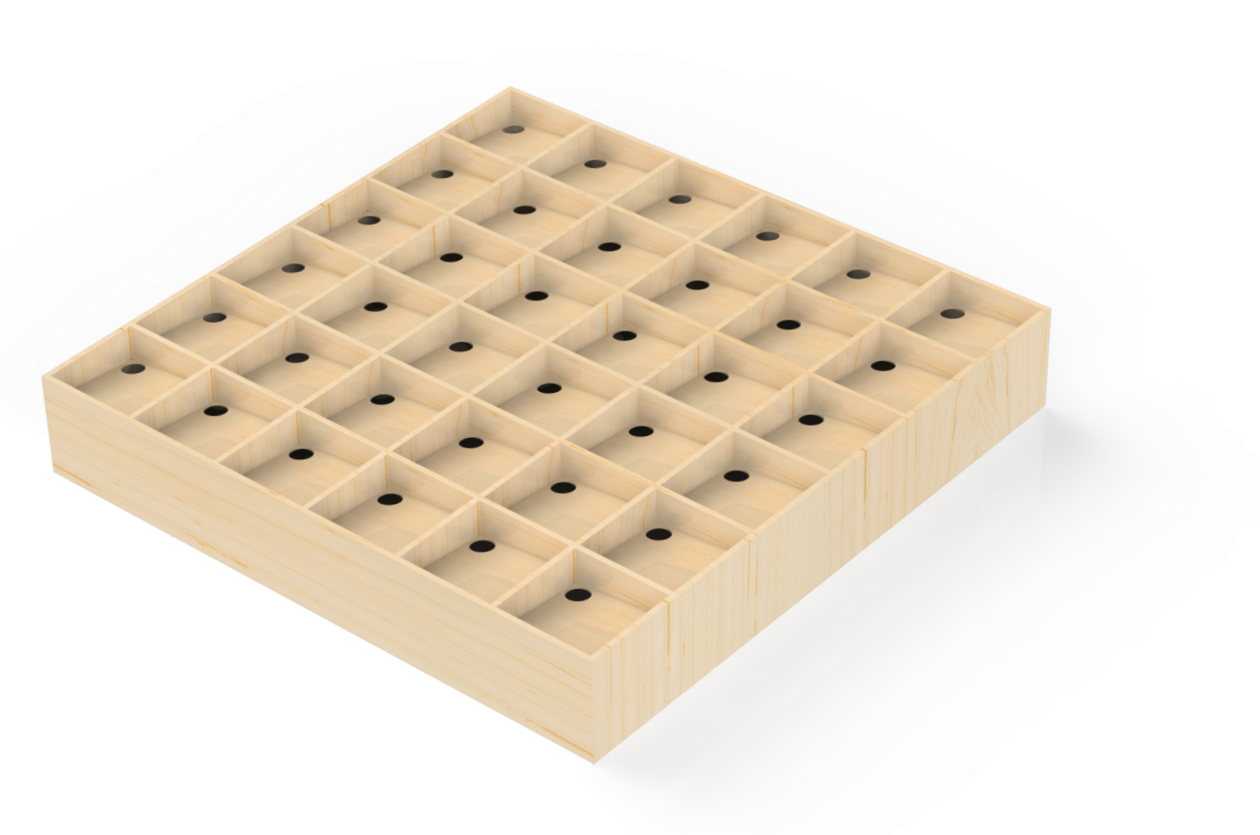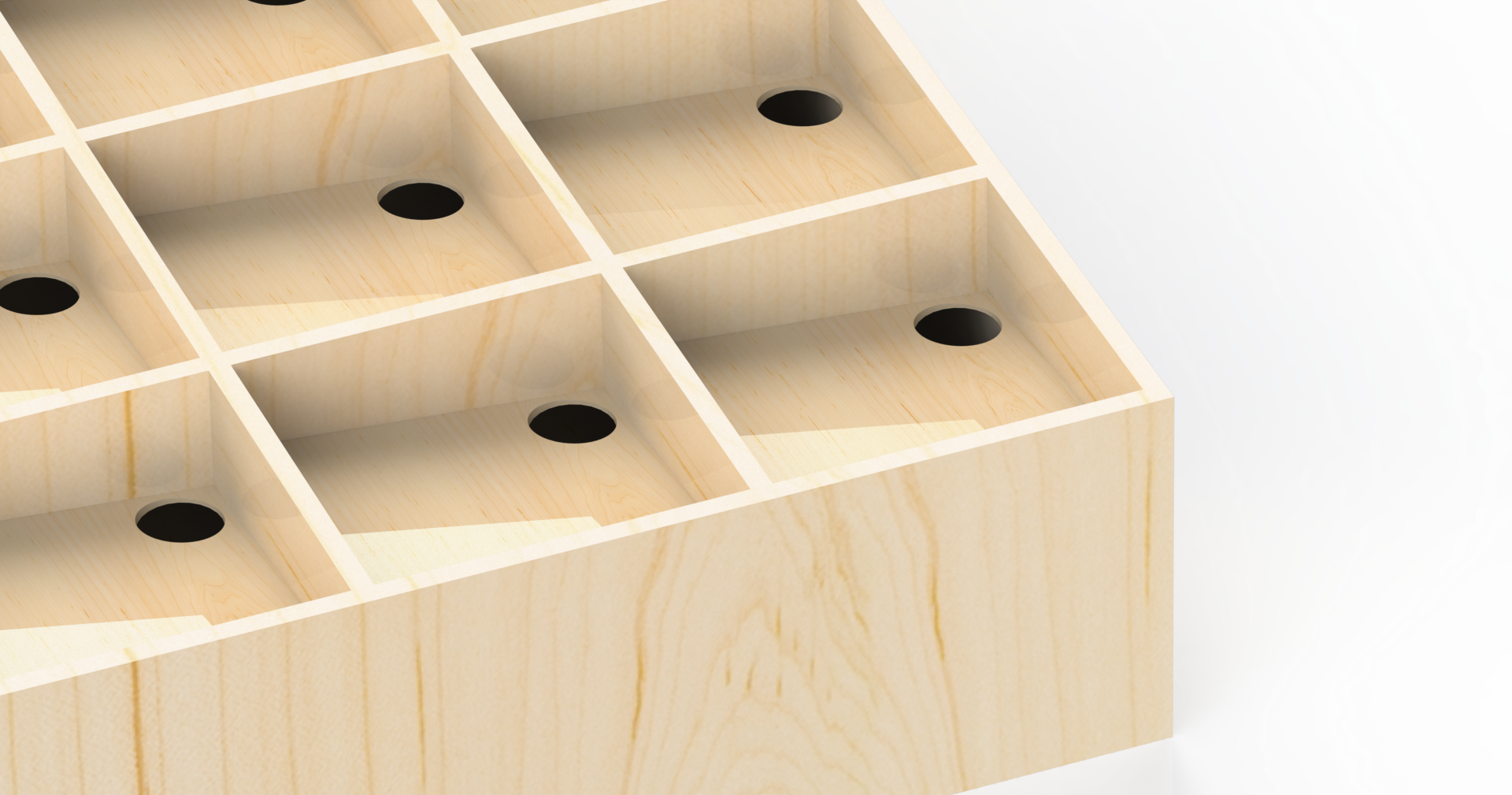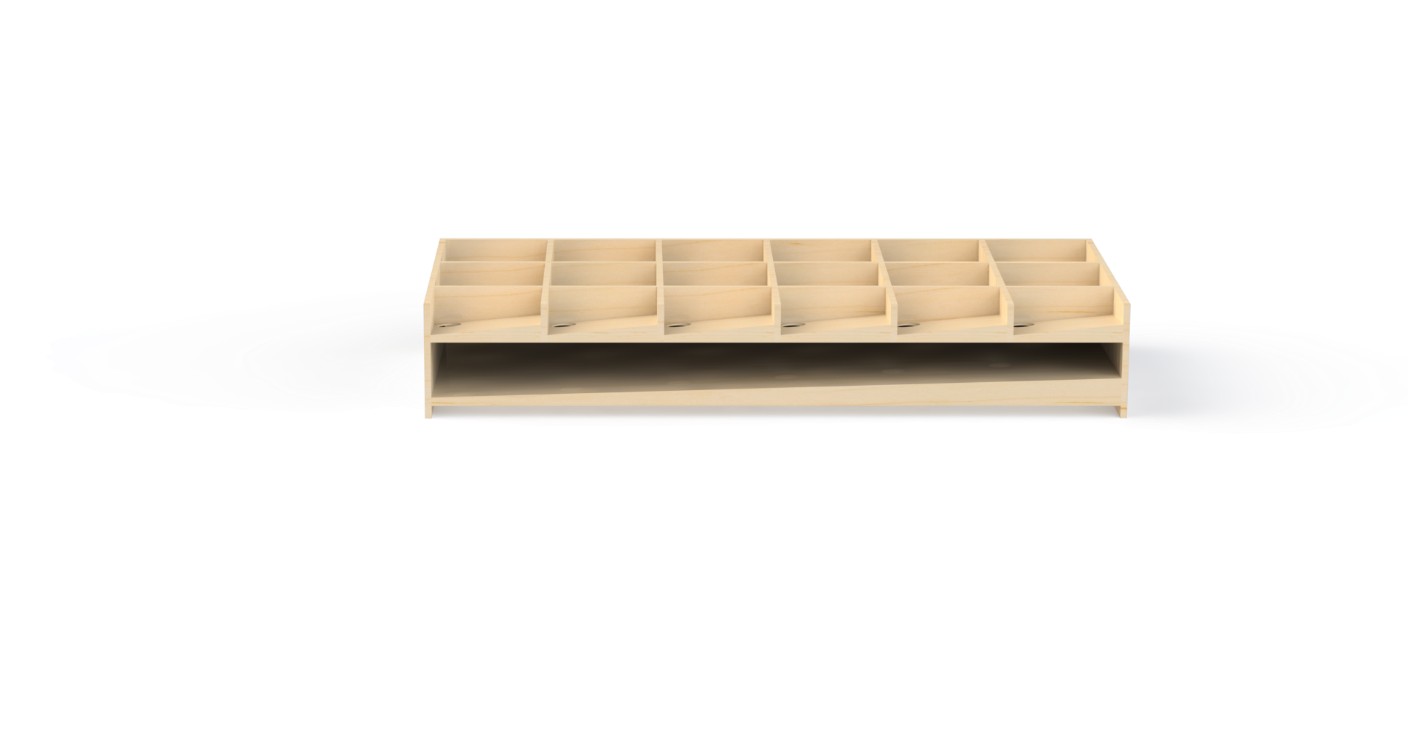Ball Detection Grid
A critical part of the room is the determining which grid space a ball landed in after being tossed by the users. To further narrow this concept down, we chose to explore this as one of the components of our gag that we would be pursuing. Below is a picture of the completed model, a direct translation of the grid that most are familiar with if having played battleship before.

The grid itself is 9’ x 9’, leaving 6” of clearance on each side for installation of the nets. As the grid itself is 6 x 6 squares, each is roughly 1.5’, which correlates directly to the visuals presented to the users on the playing side of the room.
The physics of the grid is quite simple—by taking advantage of gravity, all the balls can be fed back to the Ball Release Mechanism without the need of extra mechanical or electrical components. To achieve this, when a ball lands in one of the squares, it is immediately funneled to one corner as the entire grid is slanted here. Detection of the ball is now very easy, as an IR emitter/receiver is installed directly over each hole much like an arcade basketball game; if a ball rolls into the hole, the IR device will be able to detect it and transmit the necessary info to the players on the other side of the board.

After rolling to one corner, the ball drops through a hole to the second level which is slanted as well, again funneling the balls to one corner of the apparatus. This allows for all the balls to return to one area where they will enter the Ball Release Mechanism, and then soon after return to the players.

The entire apparatus is to be constructed out of wood for durability and structural integrity, with a damping material such as felt lined on the bottom of each square to reduce the coefficient of restitution of the balls.
